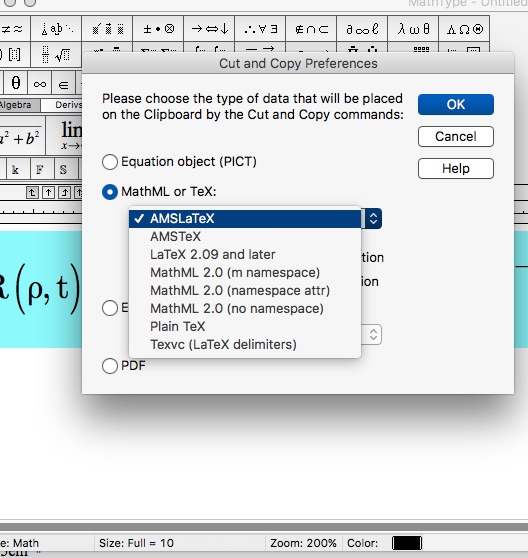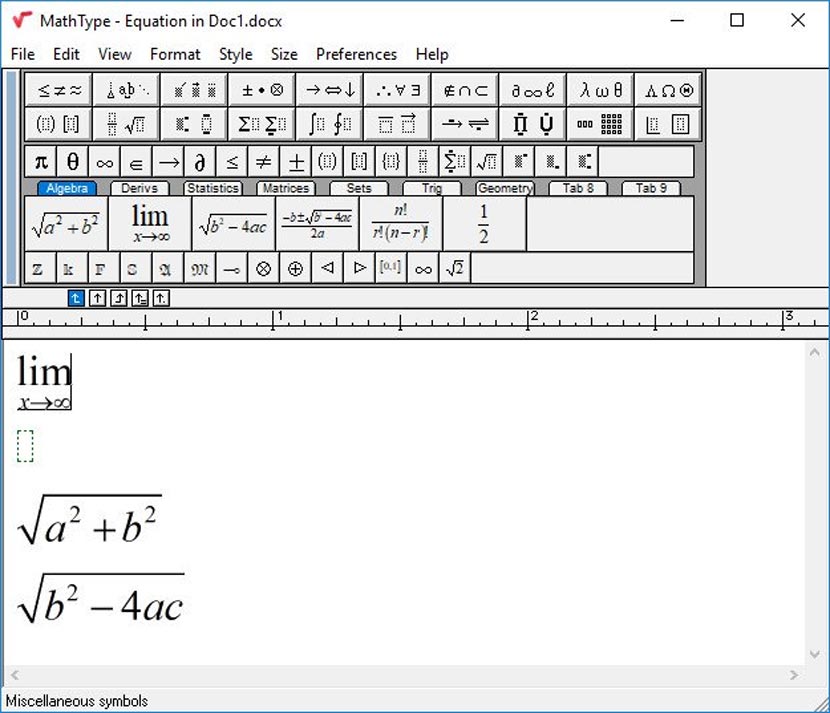- Mathtype For Wps Office 2019
- Mathtype Software
- Wps Office Download
- Mathtype For Wps Office Download
- Mathtype For Wps Office Free
Applies to:
| MathType 6 and later for Windows | Microsoft Office 2007 and later for Windows |
- MathType has good compatibility with Office,Support for various versions of Office software,Like Microsoft Office 2016、Softmaker Office、WPS Office, etc.。. Multi-platform support MathType is available for 800-plus software applications and websites,Support for any word processing software、Demo program、Page program、HTML editing.
- MathType automatically installs and adds a new equation editor toolbar to Microsoft Word and PowerPoint, for Windows and Mac computers. MathType also works for Pages and Keynote. Download MathType 7 for Windows Download MathType 7 for Mac.
Situation:
温馨提示:Design Science公司授权给WPS的是Mathtype精简模式,兼容性不太好,推荐使用Office 2007以上的版本。目前WPS中的Mathtype快捷菜单不能使用,可以通过“插入对象”或在加载项下来实现(如下图所示)。. This tutorial shows you how to type mathematical symbols in open office writer.
You've added several commonly-used commands to the Quick Access Toolbar (QAT) in Word and PowerPoint. You'd like to add a few of the MathType commands as well.
Mathtype For Wps Office 2019
Background:

The QAT was introduced as part of the Microsoft Office Ribbon user interface with the release of Office 2007, and continues in the most recent versions of Office. Its default location is the upper left corner of the Word window, but you can optionally change its position to beneath the ribbon.
Adding MathType commands to the QAT:

There are two ways to do this. Either will work. Here's the first method, and the easier of the two:
Right-click commands in the MathType tab
All it takes for this method is to find the command you want to add to the QAT, right-click it, and choose Add to Quick Access Toolbar:
Hey, we said it was easy! Utorrent for mac mojave. Still, there is one more option here -- you can add an entire group, rather than a single command. Let's say you use the commands Export Equations, Publish to MathPage, and Toggle TeX so often, you want the whole group on the QAT rather than the 3 individual commands. You can do this if you point to an area within the group that doesn't result in an individual command being selected. Note in the example above, the Convert Equations command is selected, but in the example below, no command is selected. This gives you a different option. Rather than 'Add to Quick Access Toolbar', now you see Add Group to Quick Access Toolbar.
This will add a single icon to the QAT, and clicking the icon will expand to show all commands within the group:
Choose Customize Quick Access Toolbar
If you prefer, you can right-click anywhere on any part of the ribbon, and choose the command Customize Quick Access Toolbar. Doing so will bring up 'Word Options', already opened to the 'Quick Access Toolbar' settings. In the list labeled 'Choose commands from', choose MathType Tab (click screen shot for a full-sized view):
Notice the first 3 commands beneath <Separator>. Not very descriptive, are they? <<No label>>. What is that? These are labeled in the full-sized view of the screen shot, but the point here is that seeing a command in this list can be confusing at times. For this method, choose the command on the left and click the Add button to move it to the right, which is the list of commands on the QAT. If you want to group the commands on the QAT into groups of closely-related commands, you can use the <Separator> to insert a vertical line between groups. Doing so will insert the separator beneath the currently-selected command.
Finished!
Expert tip..
It's always important to plan for the unexpected. So what happens if you open Word tomorrow and all your nice QAT customizations are simply gone? You panic, right? Then you throw the computer through the window. No, of course not. You take a deep breath, then restore your QAT from the backup file you made.
Making a backup of your QAT

To make a backup of the QAT is as simple as making a copy of the file containing the QAT. Word 2007 saves the information to a file named Word.QAT. Word 2010 and later save the information, along with other customizations to the ribbon, in a file named Word.OfficeUI. Regardless of the version of Word, you may find the file at this location, depending on your version of Windows (please see note below the bullets):
- Windows XP:
C:Documents and Settings[username]Local SettingsApplication DataMicrosoftOffice - Windows 7 and later:
C:Users[username]AppDataLocalMicrosoftOffice
Mathtype Software
Note: These locations are hidden by default. In later versions of Windows you can reveal hidden files by clicking the View tab in File Explorer and placing a checkmark beside 'Hidden items'. Earlier versions of Windows have a similar setting.
Markdown Style Guide for about.GitLab.com This website was generated by Middleman, a blog-aware Static Site Generator (SSG) widely used by web developers. Markup language is part of the structure of any SSG. It is a system to write documents making them somehow syntactically distinguishable from text. Markdown guide. What is Markdown? Markdown is a way to style text on the web. You control the display of the document; formatting words as bold or italic, adding images, and creating lists are just a few of the things we can do with Markdown. Mostly, Markdown is just regular text with a few non-alphabetic characters thrown in, like # or. Markdown is a lightweight markup language that you can use to add formatting elementstoplaintexttextdocuments.CreatedbyJohnGruberin2004,Markdownis nowoneoftheworld’smostpopularmarkuplanguages. Markdown Guide The Markdown Guide is a free and open-source reference guide that explains how to use Markdown, the simple and easy-to-use markup language you can use to format virtually any document.
Make a copy of the file and save it wherever you will remember it. A convenient technique is to simply make a copy of it and place it in the same directory as the original, but rename it ..bak or something other than the original -- Word.OfficeUI.bak, for example.
Wps Office Download
Acknowledgement
Thanks to Allen Wyatt for his article Copying the Quick Access Toolbar, from which some of the information above was taken.
Mathtype For Wps Office Download
If you have a tip that you'd like to pass along to us for possible inclusion in our Tips & Tricks, email us.
Mathtype For Wps Office Free
| |||||||||||||||||||||||||||||||||||||||||||||||||||||||||||
|
| ||||||||||||||||||||||||||||||||||||||||||||||||||||||||||
